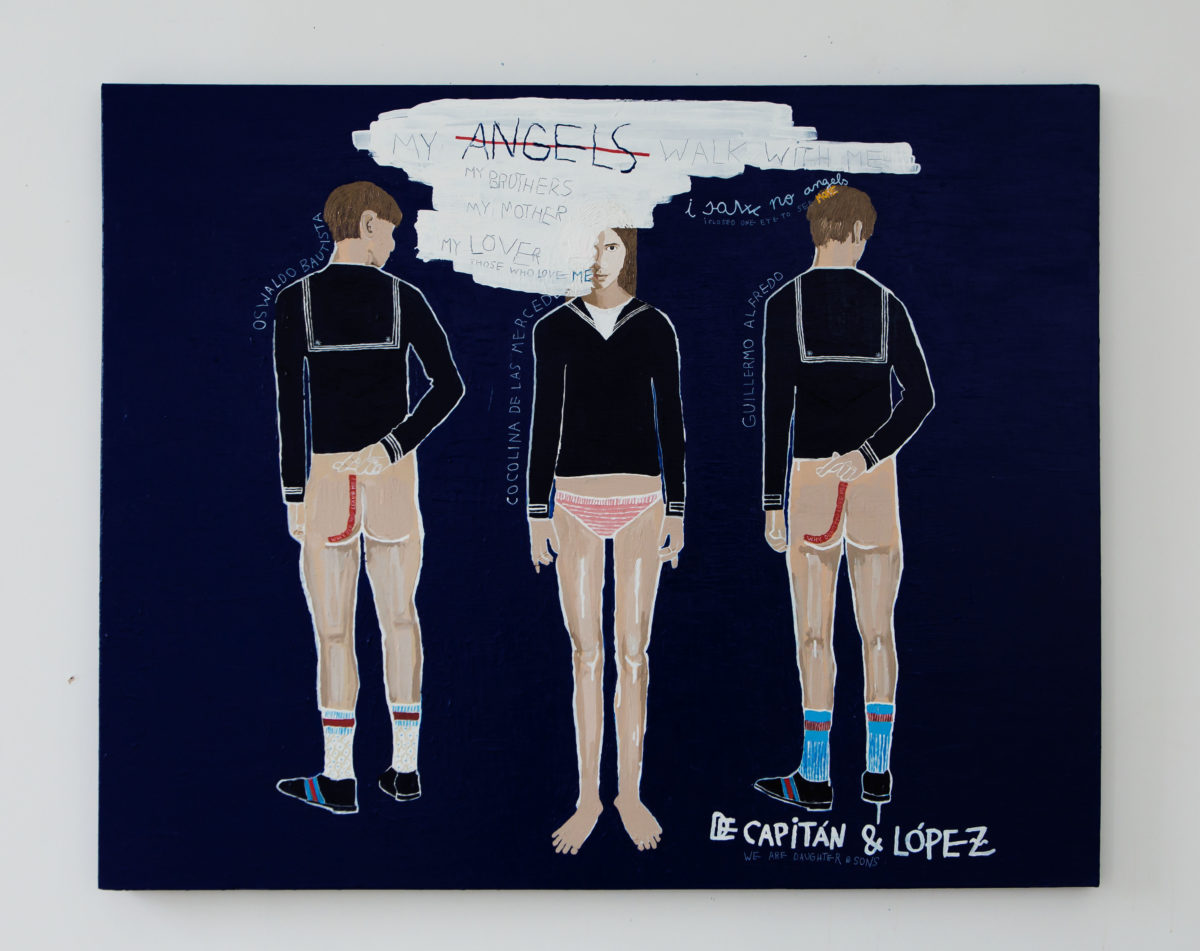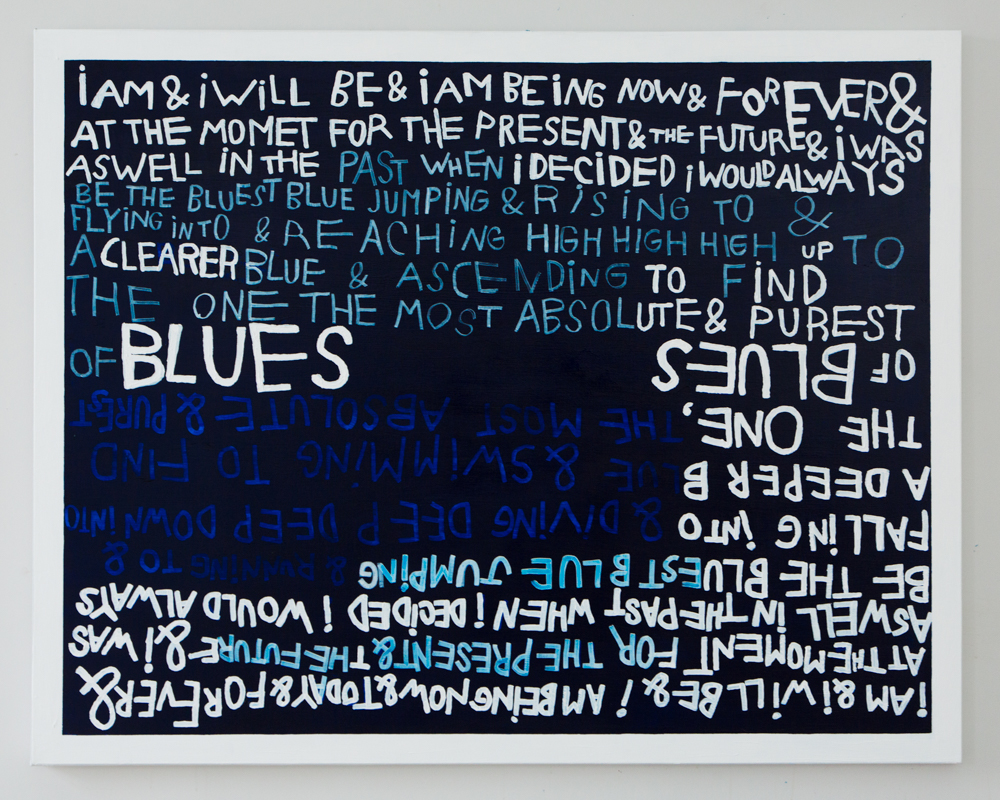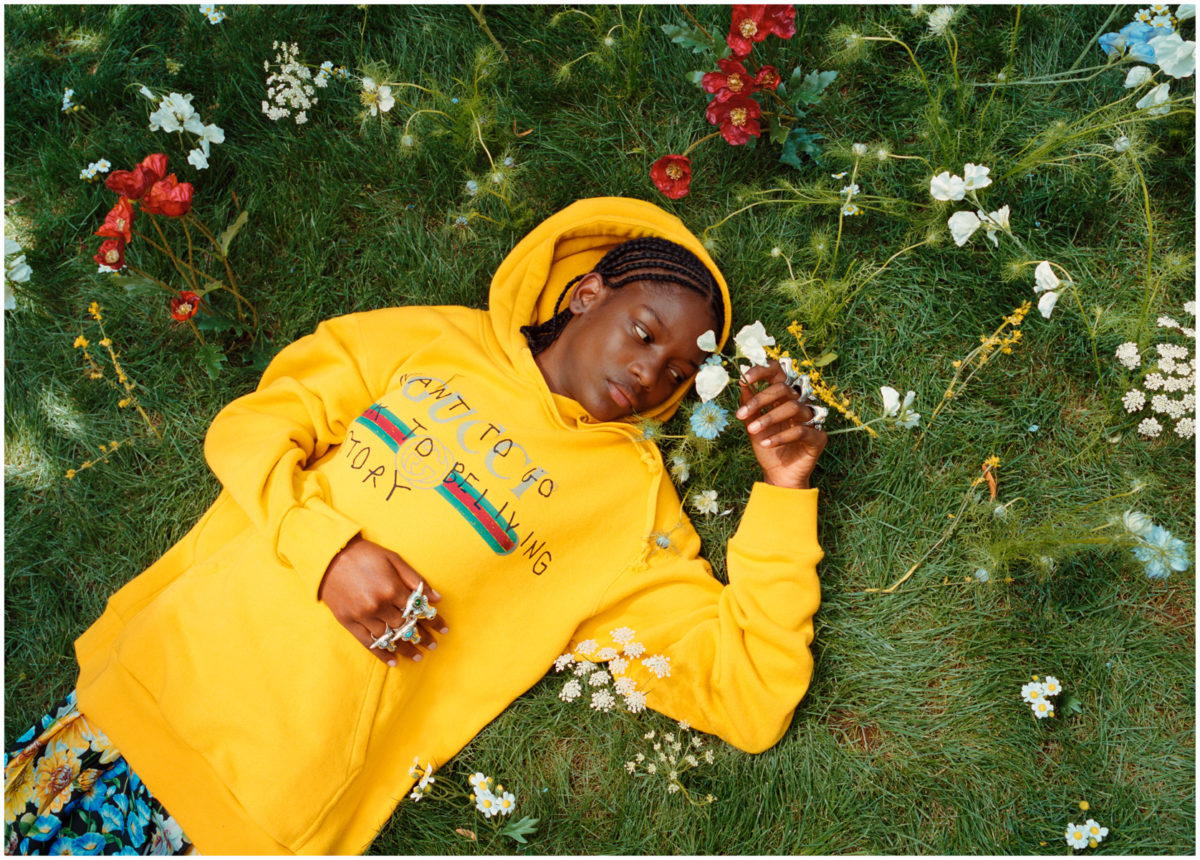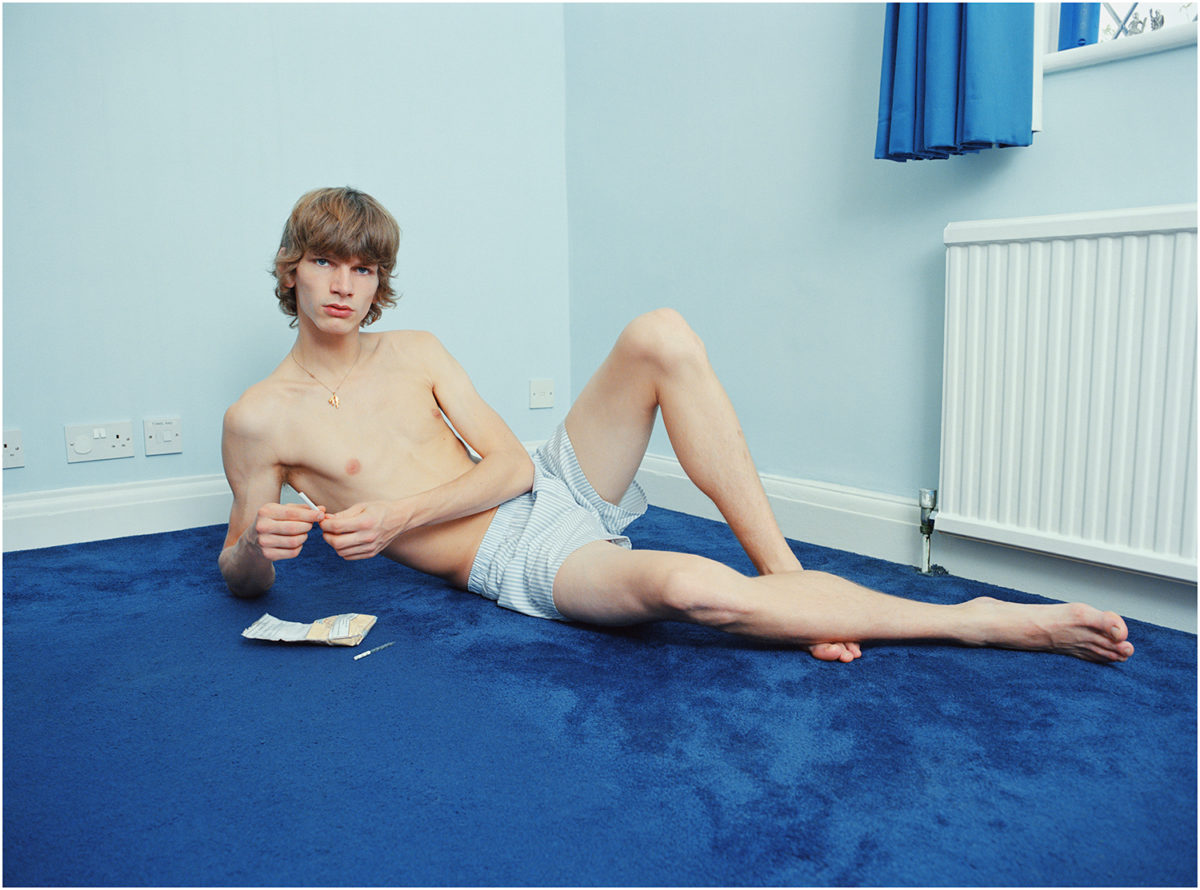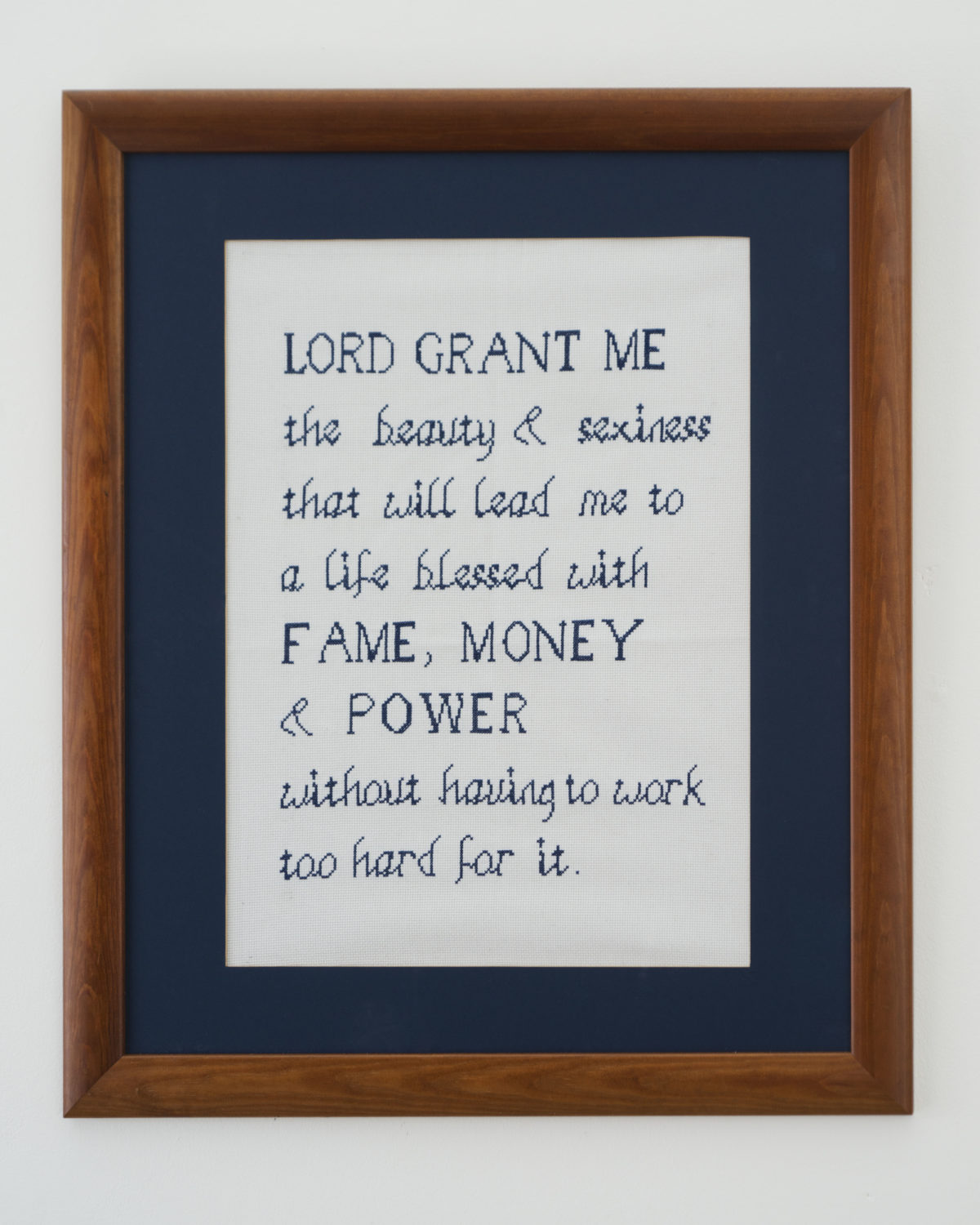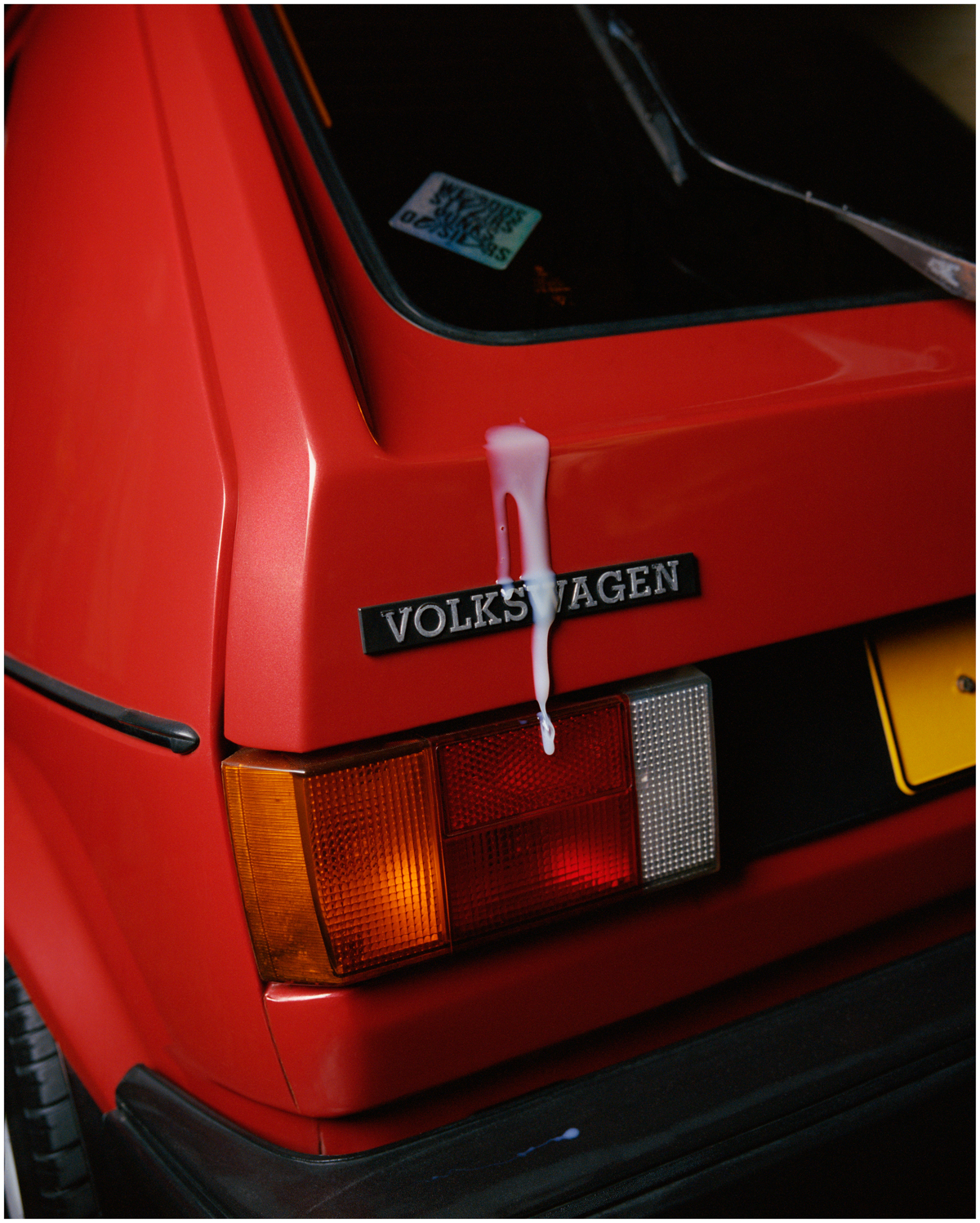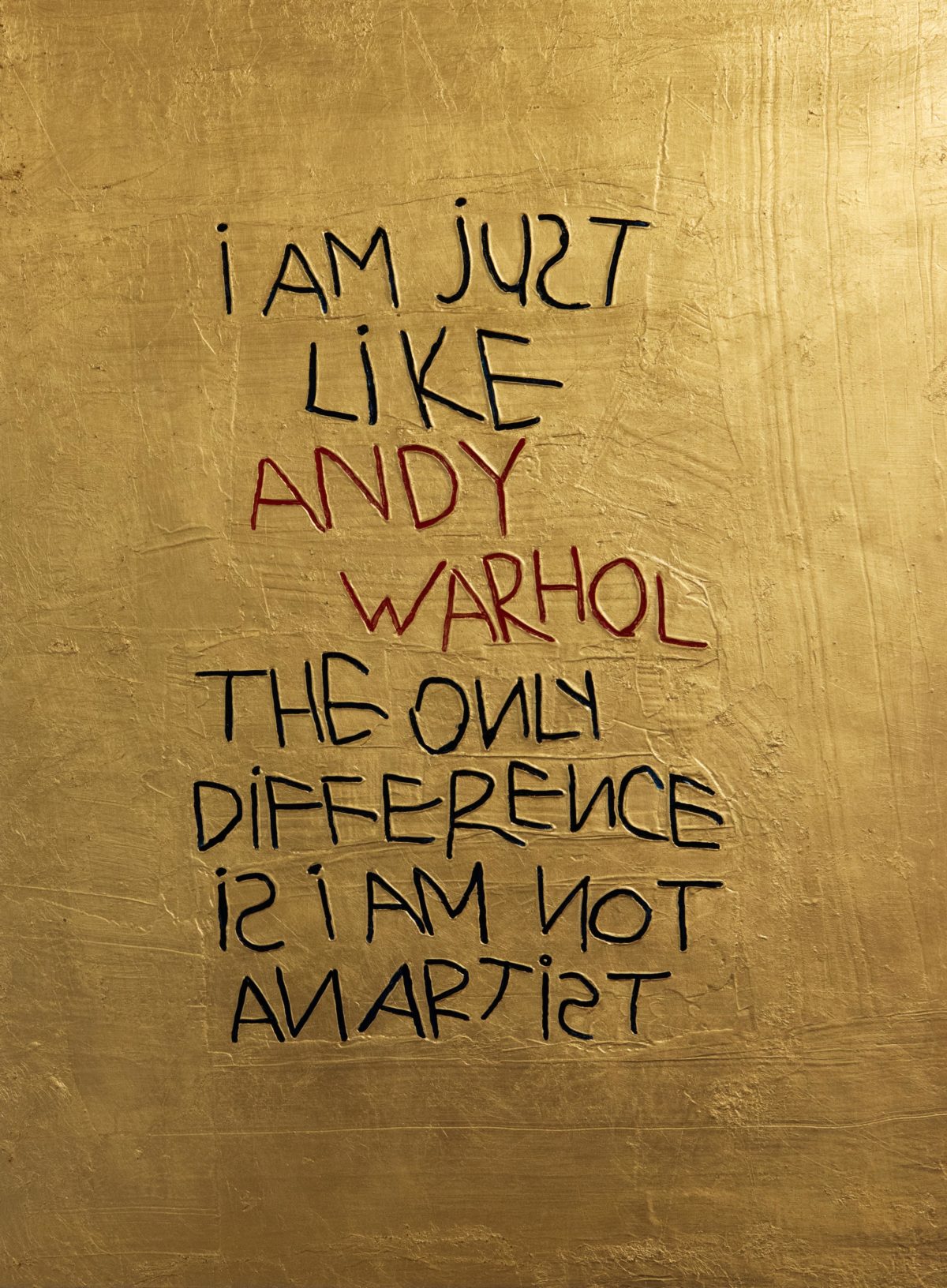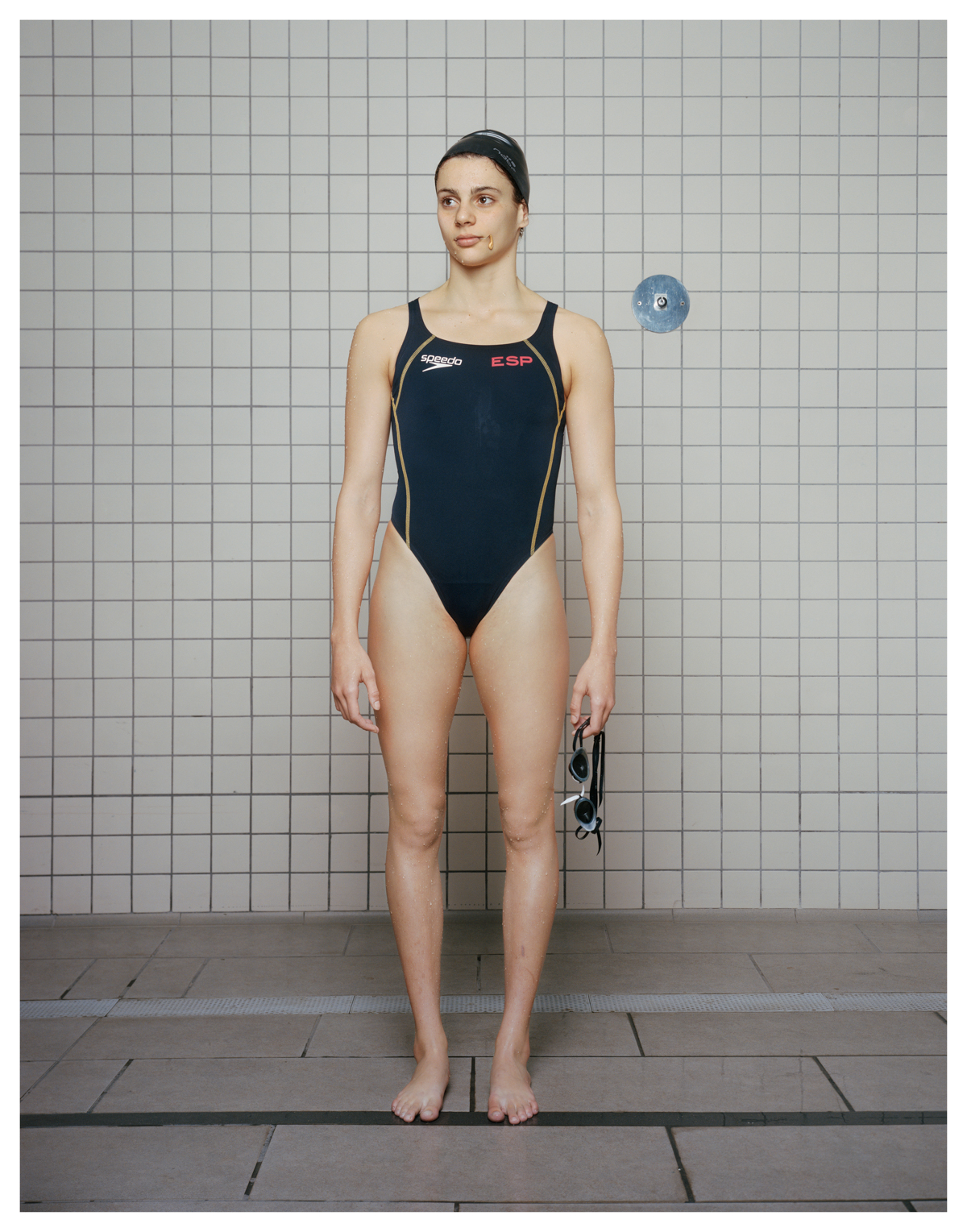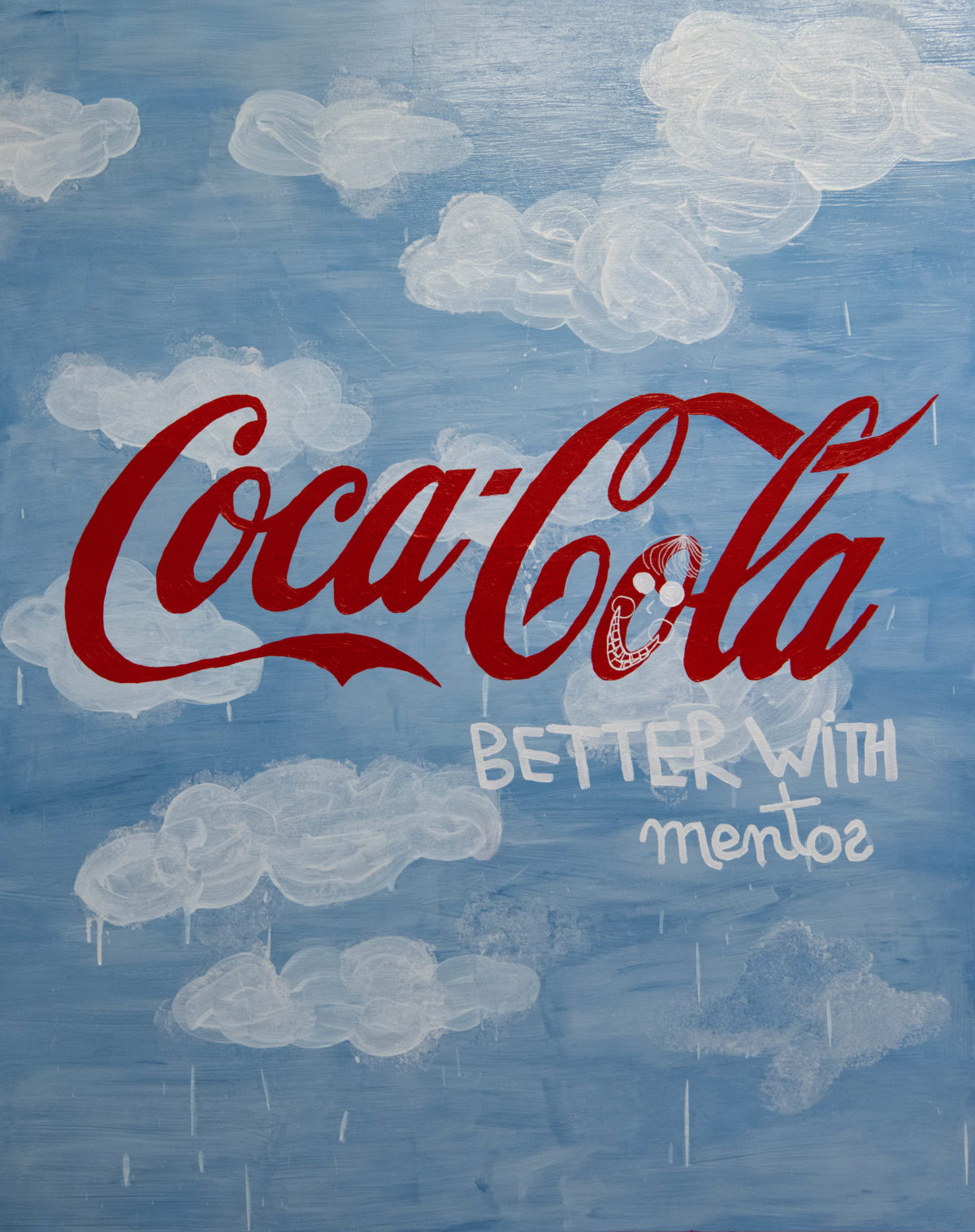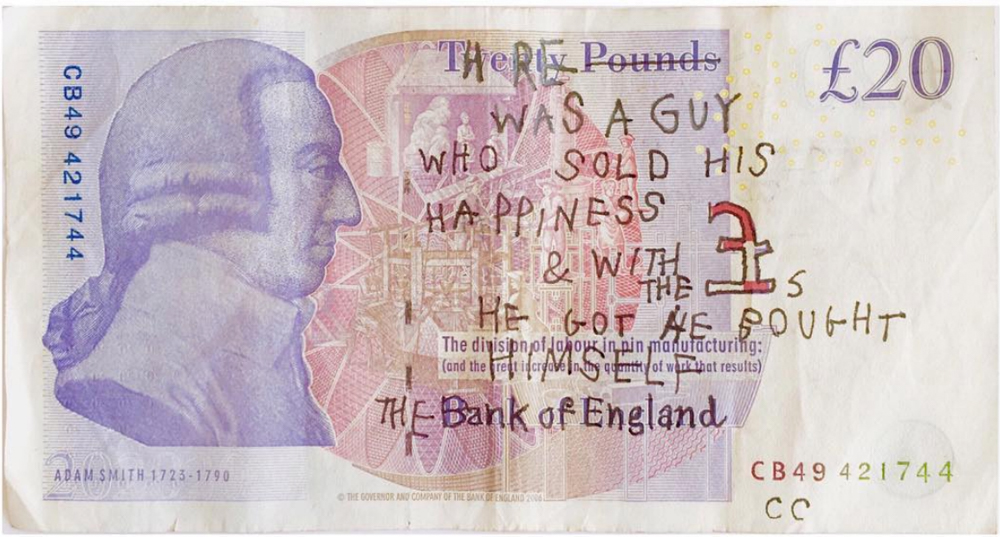Written by Maria Vogel
25-year-old Coco Capitán’s artistic practice has become recognizable in the public realm through her signature typefaces of simple and humorous messages that are open to interpretation by the viewer. Her practice straddles the fine art and commercial art worlds, and includes photography, painting, and prose. Capitan’s collaboration with Gucci in 2017, in which her signature typeface was scribbled onto the House’s handbags and t-shirts, brought her work to the forefront of popular culture. Here, we chat with Capitan to learn more about her multi-layered creations.
Your artwork is hard to place in a category, blurring boundaries of art forms. Is this something you are interested in? How do you define your art?
My art is a direct reflection of my life, which as most lives, is hard to categorize. I don’t think defining it adds much value, I like to leave it open to the interpretation of the viewer. I like to play with boundaries and re-think the very nature of them.
What does landing a major collaboration such as Gucci at such a young age mean to you?
It certainly helps reassure that your hard work has some recognition and others are interested in what you create. I had worked with Gucci for a long time before the collaboration came out. It’s an honest reflection of the personal relationships I have created within the different people that make the House. I think that age is just coincidence. I just keep going when it comes to work and don’t think so much about how old I am.
How did growing up in Spain influence your artistic practice?
I had a relatively isolated childhood geographically, and this led me to explore many stories in the world inside my own head. Now, as a “grown-up artist”, I like to revisit this world and develop the stories further.
The South of Spain is very different to the capitals where I live and work know. I am often absorbed by my memories and feelings of longing.
Who have been the biggest influences on your practice? Have you had any mentors in your career thus far?
My biggest mentor is Mark Lebon (acclaimed photographer), who has supported my work since I was a young student. I can’t thank him enough for all he’s done for me. More than the practical teaching; it is the human value. To know that you are not alone and you can be understood as an artist and as a human-being. Also, Mark taught me the importance of making mistakes in order to progress.
Where do you draw inspiration for your art?
I think I draw the most inspiration from everyday life. Looking at other artworks can be good to encourage you if you don’t feel like making work, but my true inspiration is from things I hear and see on the street, and ideas that flit across my mind in the everyday. Feelings, sentiments, and experiences.
Social media and art have a contentious relationship. How do you see social media as fitting into the contemporary art world?
Social media can be a good tool, but it can turn the other way around. I think it should stay a tool that you use when you need, but it shouldn’t become the primary medium to display your work and interact with the audiences and it shouldn’t consume much of your time to manage it. The place of an artist is in the studio, the physical world, the street, the galleries. It is good to talk to people! Especially if you are creating physical pieces. The internet is a practical way to connect with other artists and discover new work, but it shouldn’t replace more old-fashioned ways of communication. Recently, I’ve come under the impression that many people use it as a drug to get a quick reassurance of social acceptation. While I don’t feel judgmental towards this need, I do think there are more valuable and practical ways to feel loved and accepted.
Have you set goals for yourself as an artist? Where do you hope to be in 5 years?
I want to be happy and productive, in that order. I am not a great long-time planner, I’m too ambitious and imaginative.
Tell us about your upcoming show at the Daelim Museum. What will you be showing and what is special about this particular exhibition?
This is my first solo show in Asia which is special in itself. This show afforded me the opportunity to experiment in a range of mediums I’d never used before, such as ceramics and sculpture. I particularly like the installation works. There’s a magic to installation art, you dream something up, think of a design, think of a medium, work with people to realize your vision. Installations make any idea you might have possible, which I think is an artist’s greatest dream.
At the end of every interview, we like to ask the artist to recommend a friend whose work you love for us to interview next. Who would you suggest?
Reginald Sylvester or Frances Wilks.
Coco Capitán’s Is It Tomorrow Yet, will be on view at the Daelim Museum in Seoul, South Korea, from August 2, 2018 – January 27, 2019.
